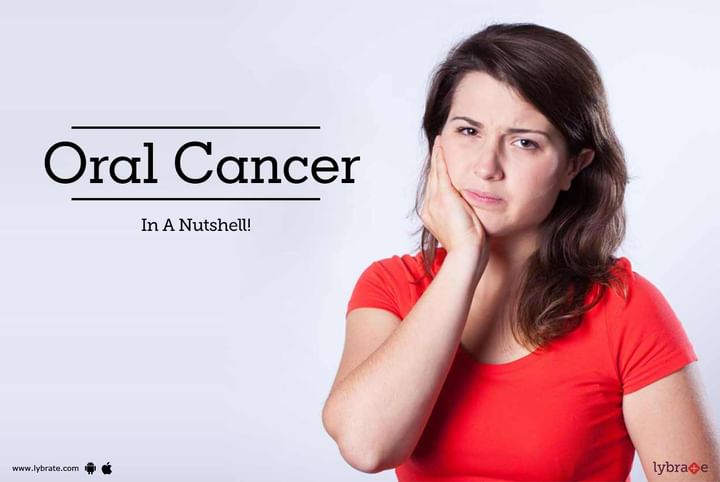Oral Cancer - In A Nutshell!
Oral cancer (OC) occurs when DNA mutations develop in the cells lining the lips and the mouth cavity. It commonly affects the tongue, floor of mouth, buccal mucosa, lips, palate, gum etc all. Mostly, oral cancers are squamous cell carcinomas that begin in the squamous cells lining the lips and the inside of mouth.
-
Type: of oral cancer are as enumerated below -
-
Squamous cell carcinoma: is the most common, as described above.
-
Adenocarcinoma: affects the salivary glands.
-
Lymphoma: affects the tissues of the tonsil(s) or those involving the lymphatic system.
-
Melanoma: may affect the mucous tissues of the oral cavity.
-
-
Gender: affects the male populace predominantly. But, it can affect both male and female. It’s the commonest cancer in India currently, and accounts for a significant percentage of the total cancer mortality.
-
Etiology: consumption of “khaini” (tobacco & lime mix), betel nut, areca nut, slaked lime, chronic irritation due to irregular teeth, smoking, alcohol consumption, oral infection with Herpes Simplex Virus (HSV) / Human Papilloma virus (HPV), nutritional deficiencies, chronic infections & poor dental/ oral hygiene are the common risk factors that can trigger oral carcinogenesis. It is noteworthy that the local effects of tobacco and alcohol are both dose-dependent and synergistic.
-
Features: the various presentations (of signs & symptoms) of Oral cancer are as given below –
-
Cheek cancer - hard and painless thickening, with an ulcer sometimes that does not heal for weeks together.
-
Lip cancer - white patch on the inner lining of the lip on which a hard mass slowly develops.
-
Palate cancer- persistent sore on the hard palate that may ulcerate.
-
Throat cancer - difficulty swallowing, sore throat, voice changes, feeling of hard lump in the throat.
-
Tongue cancer - ulcer on the side of the tongue that bleeds occasionally and does not heal.
-
Gum cancer and cancer of the minor salivary glands - loose teeth, bad breath and sensory loss of the feelings in the face
-
-
Screening: is generally recommended for asymptomatic populations goal of which, as usual, is to be able to detect & diagnose oral cancer at an early stage which is potentially curable. Visual screening by healthcare personnel including dentists, general practitioners, oncologists, surgeons etc all is crucial to detect not only early asymptomatic oral cancers but also the oral pre-cancerous lesions including oral submucous fibrosis (OSMF), oral leukoplakia, erythroplakia et al which carry a high risk of malignant transformation to in-situ and invasive cancers.
-
Diagnosis: a complete physical exam of the local parts basis the features mentioned above arouses suspicion that prompts diagnosis -
-
Biopsy (punch or removal of mass of tissue (excision) for cytology) clinches the diagnosis of oral cancer. Should there be a neck mass that arises suspicion of a regional metastatic disease, a fine needle biopsy (FNB) can be attempted.
-
Initial staging workup includes CT, MRI scans etc all. PET CT scan though frequently employed, is not usually used for the initial workup.
-
A triple endoscopy that includes laryngoscopy, esophagoscopy and bronchoscopy can help definitive staging of the disease. Biopsies obtained during this procedure help confirm the primary diagnosis, define the extent to which the primary site disease has spread, and identify additional pre-malignant lesions and metastasis, if any.
-
-
Treatment / Prognosis: preventive measures, earlier diagnosis and right early treatment is key for better prognostication and efficient/ effective therapeutic management of oral cancer. Conventional treatment includes surgery, radiotherapy, chemotherapy as deems appropriate. Simultaneously, an adjunctive or integrative naturopathic treatment with suitable complementary & alternative medicines (CAM) too can help improve clinical endpoints and facilitate recovery as would be feasible contextually. As seen with other cancers, the site, stage, histopathological grading etc all determine the treatment outlook. The number of micronucleated oral mucosal cells can be a useful biomarker for predicting course of oral pre-cancerous lesions and prognosis thereof.
-
Prevention: rightly said, prevention is always a better choice. Although genetic risks are difficult to modify, still an increased focus on protective factors and avoidance of the risk factors can be of help. Especially, abstaining from use of tobacco/ products, alcohol, regularly maintaining oral health and hygiene and daily intake of fresh seasonal fruits and vegetables can help prevent a vast majority of oral cancers. Also, timely screening/ detection of the pre-cancerous lesions of the oral cavity and prompt treatment thereof is crucial to preventing a malignant transformation of the same. If you wish to discuss about any specific problem, you can ask a free question.



+1.svg)
